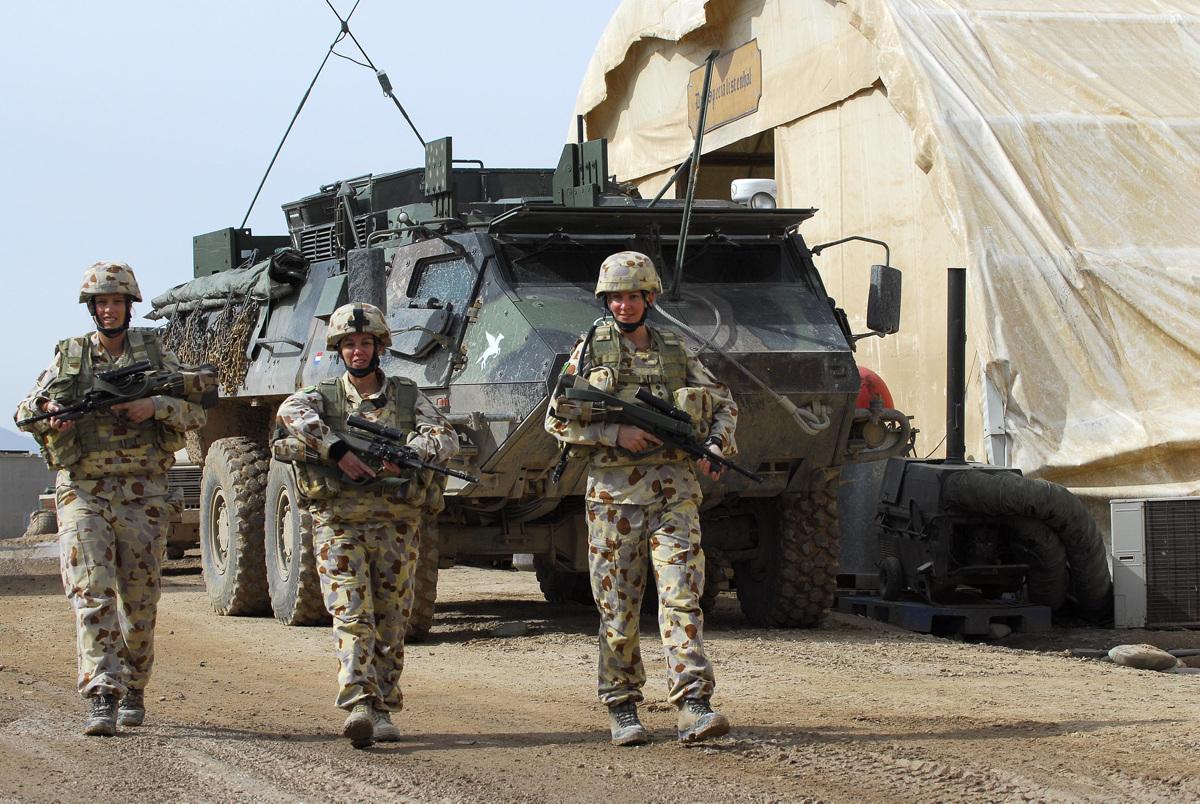 Today marks International Women’s Day, so it’s a pertinent time to assess how Australia’s 2016 Defence White Paper addresses the issue of women, peace and security (WPS).
Today marks International Women’s Day, so it’s a pertinent time to assess how Australia’s 2016 Defence White Paper addresses the issue of women, peace and security (WPS).
At first glance, the paper provides a useful snapshot of some of the valuable progress that has been made in recent years across Defence to improve the participation of women, and to integrate gender advice into its work (previously explored here). That progress is one of the reasons why a recent global study on WPS highlighted the work of the ADF on recruitment and retention of women as an example of good practice.
In this regard, the White Paper acknowledges the well-known reality that women are under-represented in Defence and reiterates existing commitments to advance a range of measures to increase the participation of women both in the ADF and the Australian Public Service (6.24 and 6.25). And for the first time, this White Paper also acknowledges the importance of gender expertise as part of Defence’s ongoing engagement in efforts to maintain peace and security (5.79 and 5.80).
The document is a marked improvement on its predecessors in the way it addresses issues related to diversity and cultural reform. Indeed, the Minister’s introduction acknowledges that a ‘more diverse and inclusive workplace, with a focus on gender equality in professional development and progression opportunities’ is important to future capability. Unfortunately, it’s on this aspect that the White Paper disappoints and under-delivers. For a document meant to provide ‘the Government’s vision to enhance Australia’s defence capability’, there’s little explanation setting out how and why the participation of women and the integration of gender advice is integral to Australia’s future defence capability.
One area where this link could’ve been drawn more readily is gender advice to military operations. The issue’s partly captured in paragraph 5.80 which notes ADF personnel have been deployed as gender advisers to the NATO-led mission in Afghanistan. But that captures only part of the effort and overlooks other important benefits afforded by gender advice to military commanders, including how it can help to shape operational planning and execution. That’s somewhat surprising when you consider that WPS was an integral part of Australia’s engagement last year with the US in Exercise Talisman Sabre, the most significant bilateral military exercise between our two countries.
In Talisman Sabre 2015, the ADF worked closely with US counterparts to ensure that gender advice was considered in the lead-up to the exercise (through education and training) and throughout the planning and conduct of operations. It was an issue considered at the highest levels of government, with the 2014 AUSMIN communiqué endorsing the value of incorporating WPS objectives as part of combined planning for the exercise.
Despite those commitments and recent experience, WPS wasn’t identified in the White Paper as an important area for future cooperation between Australia and its most important ally—nor one for any other bilateral relationship explored in the DWP.
It could be argued that as a strategic document, the White Paper isn’t intended to provide that level of granularity when it comes to Australia’s bilateral relationships. But topics such as logistics, law and leadership, professional military education, English language training and the appointment of Defence advisers are all deemed important enough to be listed in the context of various bilateral relationships.
Consider the likely impact on women and girls of some of the strategic drivers the White Paper identifies as likely to shape Australia’s security environment to 2035. In October 2015, the UN Security Council adopted its eighth resolution on WPS—resolution 2242—since the issue was placed on its agenda fifteen years ago. This latest resolution recognises the importance of including gender expertise and considering the role of women in relation to global responses to terrorism and violent extremism.
Though the White Paper acknowledges that Australia’s military support is but one tool of a whole of government effort to address the threat of terrorism and foreign fighters, it nonetheless makes no specific reference to gender expertise or the need to address the disproportionate impact of those emerging security threats on women and girls. There are similar oversights in referencing gender expertise more broadly throughout the White Paper as part of Defence capability—particularly when you consider Australia’s experiences with state fragility in our immediate region, where we know that future efforts by the ADF to respond to instability and humanitarian disasters will continue to require an integrated and gender-responsive approach.
Compared with its predecessors, the 2016 DWP reflects significant progress in considering the role of women in Defence. Still, the latest White Paper missed an opportunity to shift the discussion on WPS from one of evolving numbers and accomplishments, to one that’s strategic and forward-looking and considers the participation of women as well as the integration of gender expertise as integral to Australia’s future defence capability. It’s an opportunity that shouldn’t be missed again as Defence considers its plans to implement the White Paper in order to address Australia’s future strategic defence interests.